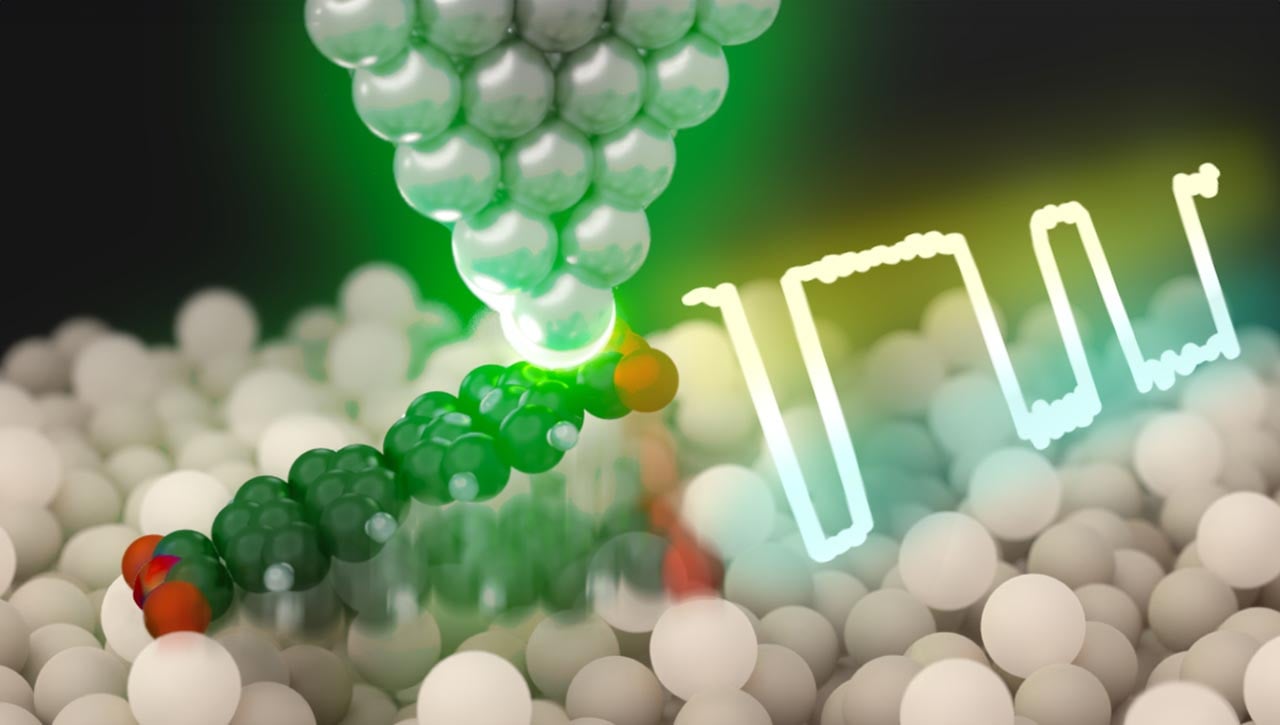博文
原子控制开启单分子光电子学新时代
 精选
精选
||
原子控制开启单分子光电子学新时代
诸平
据马克斯·普朗克学会弗里茨·哈伯研究所(Fritz-Haber Institute of the Max-Planck Society)2024年8月16日提供的消息,原子控制开启单分子光电子学新时代(Atomic Control Unleashes New Era in Single-Molecule Optoelectronics)。
弗里茨·哈伯研究所(Fritz Haber Institute)的研究人员通过开发一种以原子精度控制单分子光开关的方法,提高了纳米光电子学的水平。相关研究结果于2024年8月7日已经在《自然通讯》(Nature Communications)杂志网站在线发表——Youngwook Park, Ikutaro Hamada(滨田 几太郎), Adnan Hammud, Takashi Kumagai(熊谷崇), Martin Wolf, Akitoshi Shiotari. Atomic-precision control of plasmon-induced single-molecule switching in a metal–semiconductor nanojunction. Nature Communications, 2024, 15, Article number: 6709. DOI: 10.1038/s41467-024-51000-w. Published: 07 August 2024. https://www.nature.com/articles/s41467-024-51000-w
参与此项研究的有来自德国柏林的马克斯-普朗克学会弗里茨-哈伯研究所(Fritz-Haber Institute of the Max-Planck Society, Berlin, Germany)、日本大阪大学(Osaka University, Suita, Japan)以及日本冈崎国立自然科学研究机构分子科学研究所(Institute for Molecular Science, National Institutes of Natural Sciences, Okazaki, Japan)的研究人员。
该方法利用半导体平台上的局部表面等离子体精确调节分子构型,提高器件效率和适应性。这一创新有望在未来电子和光子器件的小型化和功能性方面取得重大进展,可能影响包括传感器和光伏电池在内的广泛应用。
纳米光电子学的突破性发现(Groundbreaking Discovery in Nanoscale Optoelectronics)
纳米光电子学(Nanoscale optoelectronics)是一个快速发展的领域,专注于在纳米尺度上开发电子和光子器件。这些微型设备有可能彻底改变技术,使组件更快、更小、更节能。在原子水平上实现对光反应的精确控制对于这些设备的小型化和优化至关重要。
局部表面等离子体(Localized surface plasmons简称LSPs)是一种在纳米级材料表面产生的光波,已经成为该领域的有力工具,能够限制和增强电磁场。到目前为止,LSPs的应用主要局限于金属结构,该团队预测这可能会限制光电子器件的小型化。
超越纳米尺度:光开关的原子精度控制(Beyond Nanoscale: Atomic-Precision Control of Photoswitching)
这项开创性的研究集中在使用LSPs来实现化学反应的原子水平控制。该团队已成功地将LSP功能扩展到半导体平台。通过在低温扫描隧道显微镜(low-temperature scanning tunneling microscope)中使用等离子体共振尖端,他们实现了硅表面单个有机分子的可逆升降。尖端的LSP诱导分子和硅之间形成特定的化学键,从而导致可逆开关。开关速率可以通过尖端位置调节,精度可达0.01纳米(0.01 nm)。这种精确的操作允许两种不同分子构型之间的可逆变化。
这一突破的另一个关键方面是通过原子水平的分子修饰实现光电功能的可调性。研究小组证实了另一种有机分子的光开关被抑制,其中只有一个不与硅成键的氧原子被氮原子取代。这种化学裁剪对于调整单分子光电器件的特性至关重要,它使设计具有特定功能的组件成为可能,并为更高效、适应性更强的纳米光电系统铺平了道路。
未来方向(Future Directions)
本研究通过提供一种精确控制单分子反应动力学的方法,解决了纳米级器件发展中的一个关键障碍。此外,研究结果表明,金属单分子半导体纳米结可以作为下一代纳米光电子学的通用平台。这将使传感器、发光二极管和光伏电池领域取得重大进展。光下对单分子的精确操作可能会对技术的发展产生重大影响,为设备设计提供更广泛的能力和灵活性。
本研究得到了日本学术振兴会(Japan Society For Promotion Science简称JSPS)项目(JSPS KAKENHI grants no. JP20H05660 and no. JP19K24684)、日本科学技术振兴机构 (Japan Science And Technology Agency简称JST)面向融合的颠覆性科技研究(Fusion Oriented REsearch for disruptive Science and Technology简称FOREST)项目(JST FOREST grant no. JPMJFR201J)的资助。
上述介绍,仅供参考。欲了解更多信息,敬请注意浏览原文或者相关报道。
Atomic-scale control of photochemistry facilitates extreme miniaturisation of optoelectronic devices. Localised surface plasmons, which provide strong confinement and enhancement of electromagnetic fields at the nanoscale, secure a route to achieve sub-nanoscale reaction control. Such local plasmon-induced photochemistry has been realised only in metallic structures so far. Here we demonstrate controlled plasmon-induced single-molecule switching of peryleneanhydride on a silicon surface. Using a plasmon-resonant tip in low-temperature scanning tunnelling microscopy, we can selectively induce the dissociation of the O–Si bonds between the molecule and surface, resulting in reversible switching between two configurations within the nanojunction. The switching rate can be controlled by changing the tip height with 0.1-Å precision. Furthermore, the plasmon-induced reactivity can be modified by chemical substitution within the molecule, suggesting the importance of atomic-level design for plasmon-driven optoelectronic devices. Thus, metal–single-molecule–semiconductor junctions may serve as a prominent controllable platform beyond conventional nano-optoelectronics.
https://wap.sciencenet.cn/blog-212210-1447084.html
上一篇:研究人员发现男性后代接触塑料与自闭症之间的惊人联系
下一篇:阿尔茨海默氏症的真正原因可能不是淀粉样蛋白:突破性的发现挑战几十年的理论
